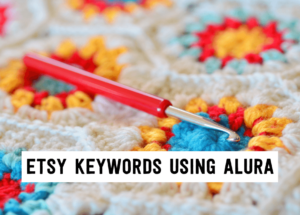
How to find the best Etsy keywords in 3 simple steps using Alura
If you want to be found in search results on Etsy, you need to optimize your product listing for SEO. And if you want to
join
With the drop in organic reach on social media lately, many handmade sellers need new ways to market their products and boost their sales.
Influencer marketing is a great opportunity and can work really well for handmade shops, but if you’ve never done it before, you may be wondering:
How do I get started doing influencer marketing for my handmade business?
…Or you may be thinking
What the bloody hell is an “influencer”? 😬
I know it can seem a bit daunting when you’re first starting out, so today I’m going to break it down into simple steps that will get your influencer marketing program off the ground and running!
So, ready? Let’s dive in.
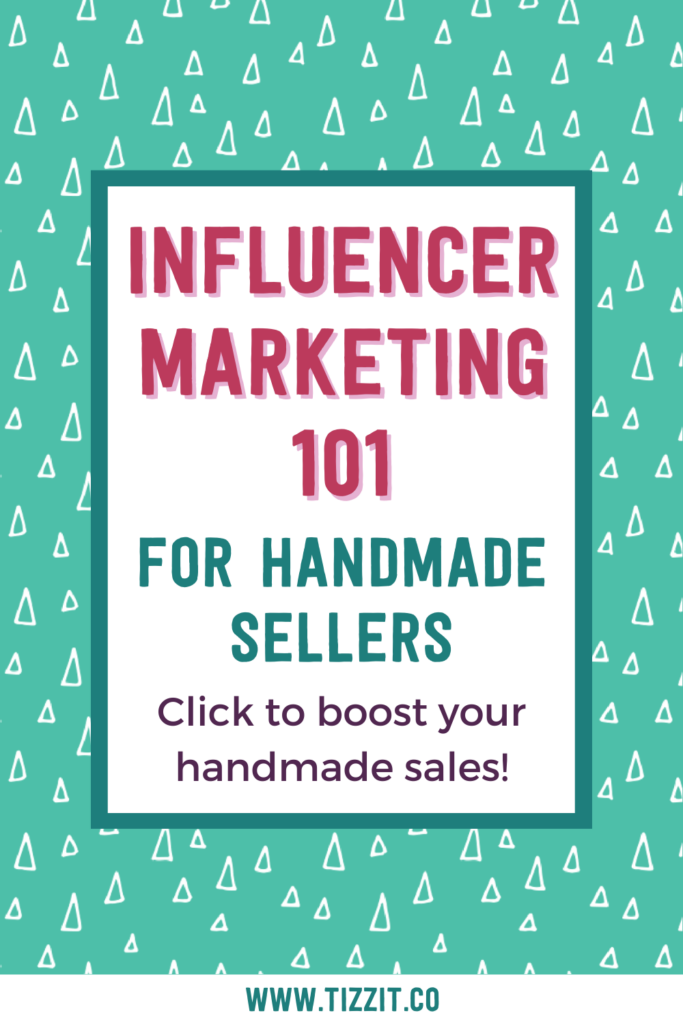
First let’s quickly talk about what an influencer is. Influencer Marketing Hub defines an influencer as:
“People who have built a reputation for their knowledge and expertise on a specific topic. They make regular posts about that topic on their preferred social media channels and generate large followings of enthusiastic, engaged people who pay close attention to their views.”
Influencer MARKETING is when you use these influencers to promote your brand and products to their audience. Since they already have an established following that trusts them, their recommendations are more persuasive than other forms of advertising, making them a great opportunity for your handmade shop!
According to The State of Influencer Marketing Benchmark Report, businesses have experienced an average return of $5.78 for every $1 spent on influencer marketing campaigns, and 42% of marketers consider influencers a top ROI-generating strategy.
So you can see that influencing marketing is a strategy worth considering.
Let’s quickly talk about the different kinds of influencers that businesses use.

FREE WORKBOOKS, CHEAT SHEETS, AND RESOURCES TO HELP YOU START, GROW AND PROFIT FROM YOUR HANDMADE BUSINESS.
If we look on Influencer Marketing Hub, they differentiate influencers by size:
When we think about working with influencers we often picture working with the big guys, but keep in mind that you’re not going to be working with Kim Kardashian— and you don’t necessarily want to because actually, influencers with a much smaller audience have an ever higher engagement rate.
They have really strong communities that are very niche and very engaged… and so it will work much better for you to work with nano and micro influencers than it would be if you work with mid-tier and macro or mega influencers… not to mention that budget-wise this is definitely going to be more up your alley than the bigger guys.
So why is influencer marketing a good option to market your products?
With the drop that we’ve seen in organic social reach lately, it can be pretty hard to grow your own Instagram or other social media following plus generate sales from those followers using only organic marketing.
What influencer marketing does is tap into someone else’s audience, someone that has put in the work to grow an audience and a niche that is similar to yours, which will help you get in front of more people a lot more quickly.
When an influencer promotes your product, they’re kind of passing the baton of trust to your brand. You aren’t just getting in front of people who are potential customers, you are getting in front of them via an introduction and a recommendation from someone they look up to or enjoy or trust — so it’s a much more powerful introduction.
Let’s take a look at the three main goals you would have for your influencer marketing campaign.
The first goal is “brand awareness” or “reach” – which means getting your brand and your products in front of as many people as possible, and you could have campaigns that would be just for that goal.
An example of this would be when an influencer posts about your brand or your products, tagging you and saying hey, check out <@brand name> they make this great thing!” or “I just got myself a <product> from <@brand name>, you should totally check them out!“
Next we have growing your following.
There are different ways you can drive growth in your social media following, but the best way is probably a giveaway.
You would have an influencer market your giveaway for you, posting something like “Hey, I’ve got a <product name> to give away from <@brand name> so be sure to enter — plus tag your friend for extra entries!”
One great thing about giveaways is that you can set rules, for example “tag a friend!”, which means that it can go viral when people tag their friends in the giveaway to win, and then those friends tag more friends, and so on.
The final goal is of course generating sales.
For that, you would give a special discount code to that influencer for their audience.
Doing this makes it more appealing to the audience to buy your product, they feel like they are in a special club being offered this discount. It’s enticing and incentivizes sales much more than just having the influencer saying “Hey check them out!”
So an influencer post aimed to generate sales for you might say “Hey, until the end of this week you can get 15% off on <@brandname candles> thanks to my exclusive coupon!” You can also play with scarcity and have them add “Hurry up this is a limited edition!” or “Hurry up, there might not be any left by the end of the week!”
Using a discount and scarcity and/or urgency together results in a more effective influencer sales campaign.
Now – before you start running influencer campaigns, read through these tips so that you get the most for your money.
First, before you organize a sales campaign with an influencer, you want your social media account to be in top shape. You want a feed that’s cohesive, it needs to be very clear and optimized, so for example on Instagram that means looking at everything from your bio to what your posts are about and making sure they are cohesive and clear.
There are two reasons for this.
First, influencers will check out your account before they agree to promote your products, and you need to be sure they are impressed and feel like they can vouch for you.
They’re going to be telling their audience, “Hey, go and check out these guys and buy their products!” so you need your social media account to be in good shape for influencers to feel like they are happy to associate your brand with theirs.
Second – and just as important – if someone checks you out because they saw an influencer post and are interested in your product, you want to be consistent and cohesive and IMPRESSIVE so they want to follow you. You don’t want them to land on your profile, be confused by what they see and not fully get what you’re about and leave without following you or engaging with your content.
Once your social media account is organized and ready, I would focus your influencer campaigns on the last two campaign goals we talked about, growing your following and generating sales.
This is because for reach campaigns, unless you’re going to work with macro influencers and you have a bigger budget, reach campaigns are not necessarily something I’d recommend simply because macro influencers cost a lot of money so might blow your budget, and if you’re trying to use nano or micro influencers for reach or brand awareness campaigns they will have the same organic reach problem as you do — so it’s not going to give you a lot of bang for your buck.
So essentially at the more beginning level that most of you reading this article are at, I’d recommend focusing mostly on growth and sales campaigns.
You can also use a bit of strategy with your influencer marketing campaigns.
Start with a few GROWTH campaigns so that you can grow your account following before you solicit sales. Once these new people are following you, then you can start selling to them with your own posts and videos, on your own account.
Doing this also builds up your account’s following so that when you start running influencer SALES campaigns your account has a bit of a following already, which builds trust — it’s kind of social proof for someone who is considering a purchase.
You can obviously do both at the same time, but this is what I would do to get the most for your money.
Next let’s talk about the different ways you can work with influencers.
There are generally three things that you can do when you want to work with an influencer.
The first option is to just send a product with no strings attached, and influencers can then try the product and post about it if they want, but there are no set requirements – you’re not really asking for anything in return.
This feels counterintuitive, because it’s like, what if no one posts back? Of course people really should post because you’ve chosen someone who is a good fit and is going to like your products, and it’s kind of implied that if they accept the free product they will post, but this approach is also about building a relationship longer term.
As in, you are trying to build a relationship with someone that you will hopefully work with on several occasions— they’re going to become an advocate for your brand. So that in itself will be the benefit – and your strategy – if you choose this option.
The next option is to send them a product in exchange for posts.
What you send them will depend on the cost of your product. If the value of your product is over $100 then sending one product is often fine, but if you’re sending them an $8 digital file then you may want to send them a big bundle to make it more post-worthy. These are not set numbers, they’re just examples but the bottom line is that the number of products you send them and how much you can ask for in return (number of posts, etc.) really depends on your product’s value.
The final option is paying the influencer to post content, here are the rates from Influencer Marketing Hub:
So again you can see that rates for nano or micro influencers are, obviously, much more affordable than the others.
The last thing I want to do is take a quick look at what the process looks like when you are setting up your influencer marketing strategy.
1. Find influencers
The first step is to find influencers, you can do this yourself or use an agency or database .
2. Analyze influencer to see if they’re a fit
Next, analyze the potential influencers to see who is a good fit for your business and make a list of who you would like to approach.
3. Outreach
Once you identify some influencers that seem like a good fit, reach out to them individually to see if they would be interested in working with you.
4. Negotiate / Decide if paid or product sent only
Once you choose your influencer or influencers, you next need to decide how you want to work with them (i.e. paid or product sent only) and negotiate an agreement.
5. Measure success
Once your influencers are posting about your products, it’s time to measure your success! Are you getting more followers? Are your sales increasing?
6. Repurpose posts to get more out of content
Number 6 is very important to remember: as soon as your influencers start posting about your products, be sure to repurpose those posts on your social media to get even more out of that content. You can also use it on your own website or turn those posts into ads to stretch their impact further.
7. Decide if you want to continue working with each influencer
And finally, decide if you want to continue working with each influencer based on the results you are getting. If you are seeing good results from your micro-influencers, pay them to do it again! If not, go back to step 1 and look for a new influencer to try.
Now I know I’m only touching very briefly on each step because if I go into depth on each one this article would be wayyyy too long.
I would be very happy to write an article about any of the steps to dive more in depth, so let me know in the comments below which ones you have the most questions about.
Include what your questions are and which step you feel most intimidated by or would like more support with so that I can create articles on those specifically.
Thanks for reading, and until next time, aurevoir!
you might also like…
related articles

If you want to be found in search results on Etsy, you need to optimize your product listing for SEO. And if you want to
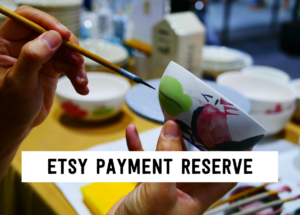
There has been a lot of talk in the Etsy community — and I mean A LOT of talk — about Etsy’s payment account reserve
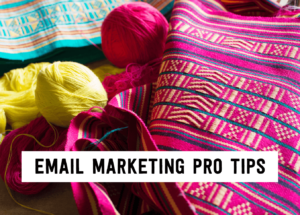
Anyone who knows me knows that I am a HUGE advocate for using email marketing to grow and scale your handmade business. But you may
Sign up below and get instant access to a collection of FREE practical guides, workbooks, and checklists that will help you start, grow and profit from your handmade shop. (without pulling your hair out!).
disclaimer
subscribe to youtube
become a member
get in touch
We acknowledge and give thanks to the Budawang and Yuin people, the Traditional Owners of the land we work and live on. We pay our respects to all Aboriginal and Torres Strait Islander Peoples and elders past, present and emerging.
4-step Maker’s Roadmap System
Library of In-Depth Courses and Training
Live Monthly Coaching Sessions
A Supportive Online Community
close
We hate spam too. Unsubscribe at any time.
close
We hate spam too. Unsubscribe at any time.
close
We hate spam too. Unsubscribe at any time.
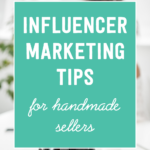
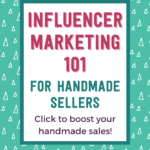

Get Instant Access to
The FULL Resource library